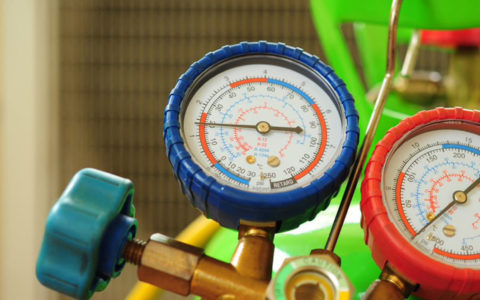Recommissioning to boost energy savings

Commissioning and/or recommissioning your site could completely change the way your business operates and save you thousands of dollars — all while also providing environmental benefits. Make sure to watch the full video here for a more detailed analysis.
A few years ago, Emerson paired with Darren Cooper and the Renteknik Group to assist a supermarket chain in determining which parts of their business were costing them the most, both financially and in terms of energy use. The project’s objective was to recommission a 20-year-old system by adding an adiabatic-type condenser and variable-capacity compressors, in this case Discus™ digital compressors.

It’s important to first understand the goals of commissioning and decommissioning. In simple terms, commissioning is a quality-oriented process designed to ensure that a building, facility or system is designed, constructed and operated to meet the owner’s project requirements (OPR). Recommissioning refers to the process of commissioning a building that has already been commissioned to verify that its systems are still functioning according to their original designs.
The test site is located in southern Ontario and was built in 1991, occupying 42,000 square feet. An emerging industry trend is taking advantage of incentive programs associated with energy efficiency. At the time, Ontario’s incentive program offered 10 cents per kilowatt/hour saved; currently, the incentives are even higher.
After building a kilowatt consumption profile based on averages taken for each ambient condition, we began recommissioning with a focus on low- or no-cost service and maintenance. Then, we began the second phase of the project and determined just how poorly the system’s old condensers were performing.
What we discovered was that the supermarket had developed some unconventional workarounds. To keep the condensers cool during warmer months and prevent overheating, facility operators were spraying them with garden hoses. We determined that the easiest and most efficient way to solve this problem was to install an adiabatic system with misting nozzles to keep the condensers cool without having to run massive amounts of water through the garden hoses. We had an ambient temperature sensor set at 73 degrees Fahrenheit with a contactor on a fan that would activate the mister if a condenser reached a temperature warmer than that threshold.
The final phase of the project involved upgrading to variable-capacity digital compressors, which would allow for better load control and energy savings. In total, the site saw energy consumption reduced by about 30 percent, generating massive cost savings as well as reducing CO2 emissions. These three phases also resulted in less downtime and less potential spoilage of product due to equipment properly operating. In fact, nuisance alarms at the site were reduced by about 66 percent. In terms of the bottom line, the site cut its operational annual expenses by about $35,000 and, with incentives, payback can be achieved in less than a year.
![[Webinar Recap]: Industry Lays Groundwork for A2L Refrigerant Adoption](https://e360blog.emerson.com/wp-content/uploads/2022/09/14470_E360_LowGWP_ONDEMAND_Webinar_960x600_2.jpg)
[Webinar Recap]: Industry Lays Groundwork for A2L Refrigerant Adoption
by Joe Summers | Efficiency & Refrigerant Regulations, Refrigerants
The stage is set for the emergence of A2L refrigerants in U.S. commercial refrigeration. Driven by...
![[New Webinar] Applying R-290 in Commercial Refrigeration Applications](https://e360blog.emerson.com/wp-content/uploads/2022/09/Applying-R-290-in-Commercial-Refrigeration-Applications.jpg)
[New Webinar] Applying R-290 in Commercial Refrigeration Applications
by Katrina Krites | Efficiency & Refrigerant Regulations, Refrigerants
In the transition away from refrigerants with high global warming potential (GWP), R-290 (aka...
![[Webinar Recap]: Align Lower-GWP Refrigerants With Applications and End User Preferences](https://e360blog.emerson.com/wp-content/uploads/2022/08/14470-E360-EmergingRefrigerants-Presenters-v02-960x600-1.jpg)
[Webinar Recap]: Align Lower-GWP Refrigerants With Applications and End User Preferences
by Kurt Knapke | Efficiency & Refrigerant Regulations, Refrigerants
Among the many dynamic trends, challenges and decisions facing commercial refrigeration end users...
The post Recommissioning to Boost Energy Savings appeared first on Emerson E360 Blog.